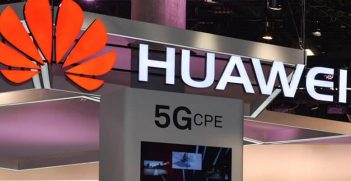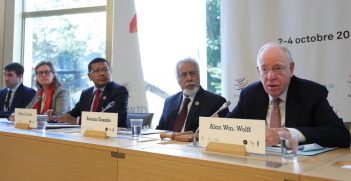Global Halal Standardisation and Muslim Diversity

In both Muslim-majority and minority contexts, the halal industry is flourishing, driven by a significant annual increase in Muslim consumer spending. As businesses eagerly vie for a slice of the halal market pie, a crucial challenge looms: the absence of global halal standards.
Practices or items which are halal, or adhere to Islamic principles of what is permissible, have grown significantly across the globe in both majority and minority Muslim countries. In recent times, halal has become the economic mantra for new government initiatives, especially in predominantly Muslim countries and nations exporting to Muslim consumers. Consumer spending in the halal economy is growing annually.
The State of the Global Islamic Economy (SGIE) has been issuing annual reports on the performance of the Islamic economy in 81 countries since 2013. For instance, its 2023/2024 report mentions that consumer spending in the halal economy, covering six categories—Islamic ethical finance, halal food, modest fashion, media and recreation, halal pharmaceuticals, and cosmetics— reached US$2.29 trillion in 2022, up from US$1.62 trillion reported in 2012. This substantial size is projected to grow annually due to the increasing global Muslim population and the rising demand among Muslims adopting a halal lifestyle.
In 2010, the Muslim population was approximately 1.6 billion, and it is projected to reach 2.2 billion by 2030. This demographic trend, driven predominantly by a young population with over 70 percent under the age of 40, continues to fuel growth, particularly among urban, tech-savvy, middle-class Muslims who are vital for expanding the halal industry in many majority Muslim countries. The resurgence of piety since the late 1970s and early 1980s in many Muslim-majority countries, which has been an important factor in the current growth of the halal lifestyle, has also been driven by youth.
Amid this thriving industry, one longstanding issue persists: the absence of global halal standardisation. This absence poses a conundrum, especially for those questioning the unity of the umma (Muslim community). However, this should not be viewed as an anomaly, considering the long history of diverse interpretations by ulama (religious scholars) since the early Islamic era, after the death of Prophet Muhammad (632 CE). Similar to the existence of madhhab (school of Islamic legal thought) within two major branches of Islam, Sunni and Shia, and within each branch, we also see pluralism in halal standards based on various interpretations of Muslim scholars affiliated with different madhhabs. Thus, despite the eagerness of businesses for standardisation, achieving harmony remains challenging due to these varied interpretations.
With market size growth, increasing purchasing power among young middle-class Muslims, and the ethical consumption narrative associated with halal products, the industry appeals not only to members of Organisation of Islamic Cooperation (OIC) countries, but also to non-OIC nations. This is evident from the top halal food exporters to OIC countries, including non-majority Muslim nations such as Brazil, India, the US, the Russian Federation, Argentina, Australia, and China, all listed among the top 10 halal food exporters. Despite the enthusiasm to capitalise on the halal economic pie, key players in these countries lament the lack of global halal standards, which complicates trade. “Having a global standard is a dream for all business players,” shared a participant from China at the world’s largest halal business trade fair, the Malaysia International Halal Showcase (MIHAS) held in Malaysia in September last year.
Global halal industries require special handling because to succeed as global exporters, they must comply with halal standards issued by various importing countries. One challenge lies in whether the standards should refer to halal standards from countries considered birthplaces or growth centers of Islam. Interestingly, most of these countries are lagging behind in the development of their own halal industry due to the assumption that all halal food produced by Muslim populations in their countries is automatically halal. Establishing a global standard through the Standard and Metrology Institute for Islamic Countries (SMIIC) of the OIC is also inappropriate, as the SMIIC itself was newly established in 2010. Likewise, the Gulf Cooperation Council (GCC), consisting of Saudi Arabia, Qatar, Kuwait, Oman, Bahrain, United Arab Emirates, and Yemen, established a standard organisation, the GCC Standardization Organization (GSO), in 2001, which began operating only in 2004. In contrast, standards issued by other countries, particularly Malaysia and Indonesia, as early pioneers, are more established and have already been adopted by various countries. Malaysia, as the leading global player in the halal industry, issued halal certification letters in 1974, halal certificates in 1994, and its first halal standard in 2000. Similarly, Indonesia, the world’s largest Muslim-majority country, issued its first halal certificate in 1991 and its first halal standard in 2012. The proliferation of halal certification is evident at each country’s airport; for example, it is easier to find halal-certified products in Kuala Lumpur and Jakarta airports than in Dubai airport. Therefore, it is not surprising that Indonesia and Malaysia are ranked at the top of the Global Muslim Travel Index for accommodating Muslim travellers by Crescent Rating.
In Muslim-majority countries, halal standardisation is governed by the state. Indonesia is currently the only country in the world where halal certificates are mandatory. In non-Muslim majority countries, governments do not regulate halal standardisation. For example, in Australia, in the sector of red meat and its product exports, there are 27 certifying bodies approved by the Department of Agriculture, Fisheries and Forestry. Some countries have specific standards that cannot be accommodated by all 27 certification bodies in Australia. The halal certification body players have mentioned how the absence of a global halal standard can lead to competition and conflict among certification bodies, especially in non-Muslim majority contexts.
As the industry grows and evolves, the key now is to make peace with the existence of pluralism in halal standards. Although the practice of talfiq (combining various opinions of different Islamic legal schools) has been permitted by some scholars since the 17th century, becoming more popular in the late 19th century to address contemporary challenges, this option has not been adopted in the domain of halal standards. Even neighbouring countries like Indonesia and Malaysia have different requirements, for example, regarding animal halal slaughtering standards. Will a global halal standard ever be established? This remains to be seen. If plural interpretations can be reconciled in rituals, can they also become unified in pursuit of economic benefits?
Dr Eva F Nisa is a cultural anthropologist at the Australian National University. She currently holds an Australian Research Council (ARC) Discovery Early Career Researcher Award (DECRA). Her DECRA project, Standardising Halal: Interpreting the Tension between Global and Local aims to advance understanding of how halal standardisation has been reimagined in the context of global Muslim cultural diversity.
This article is published under a Creative Commons Licence and may be republished with attribution.





